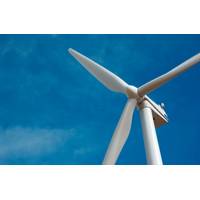Hitachi Gas Supply System Order for MHI
Mitsubishi Heavy Industries, Ltd. (MHI) has received an order from Hitachi Zosen Corporation for a high-pressure gas supply system enabling use of natural gas as fuel in marine engines.
In lieu of conventional heavy oil, the system supplies liquefied natural gas (LNG), injected under high pressure, to the engine. This configuration curbs emissions of sulfur oxides (SOx), nitrogen oxides (NOx) and carbon dioxide (CO2), thus contributing to reduction of environmental loads.
Delivery of the system is scheduled for the second half of 2016, for installation at Hitachi Zosen's Ariake Works in Nagasu-machi, Kumamoto Prefecture. After use in gas fuelled demonstration testing of a marine diesel test engine, Hitachi Zosen will use the system to provide gas fuel for the marine diesel engines that the company manufactures.
The order is the second for this system received by MHI, as well as the first system delivered to Mitsui Engineering & Shipbuilding Co., Ltd. (MES). The latest system enables higher gas pressure supply to the engines for enhancement of gas fuelled performance.
With the new system, LNG is pressurized and delivered by liquid pump. The system features a compact configuration and low power consumption. The adoption of a hydraulic driven pump system eliminates the need for a speed reduction mechanism, facilitates variable speed adjustment, and also enables installation in ships where space is limited.
The gas supply system consists primarily of four units: a unit that produces compressed natural gas (CNG) by raising the LNG's pressure and then heating the gas to normal temperature according to engine load fluctuations; a hydraulic unit that serves as the power source; a CNG bottle unit to buffer fluctuations in CNG pressure; and a gas combustion unit that safely disposes of low-pressure off-gas and uses the waste heat as a heat source. Commercial viability of this system was achieved leveraging MHI's expertise in cryogenics1 cultivated through its many years of construction of LNG carriers, its broad technological base, and its achievements in research and development.
In recent years vigorous calls are being heard in the global marine transport industry to take steps to reduce energy consumption and protect the global environment, and increasingly tight restrictions are being imposed on emissions not only of SOx and NOx but also CO2. Against this backdrop, attention today is focusing on LNG fuel as one of important solutions enabling significant reductions in gas emissions.
In the case of ships that navigate in the Emission Control Areas (ECA)2 in particular, changing fuel from heavy oil to LNG enables compliance with those areas' stringent SOx emission requirements. Additionally, with the development of new natural gas resources such as shale gas, economic benefits can be anticipated from LNG as a marine fuel that can be procured at low cost and in adequate supplies.
Going forward, MHI will focus on the marketing of the high-pressure gas supply system, targeting the further expansion of its businesses in shipbuilding and marine engineering.
Notes
1. Cryogenics refers to technologies handling LNG, liquid nitrogen and other liquefied gases at temperatures ranging from -160°C to -200°C.
2. ECAs are waters in which upper limits have been set on permissible emissions of SOx and NOx. Vessels navigating in such areas are required to comply with stricter emissions requirements. Currently four ECAs have been designated: the Baltic Sea ECA, North Sea ECA, North American ECA (including most of the U.S. and Canadian coasts), and the U.S. Caribbean ECA.











